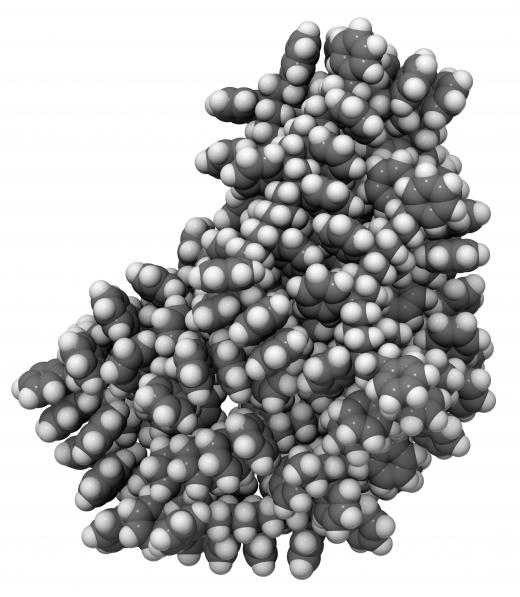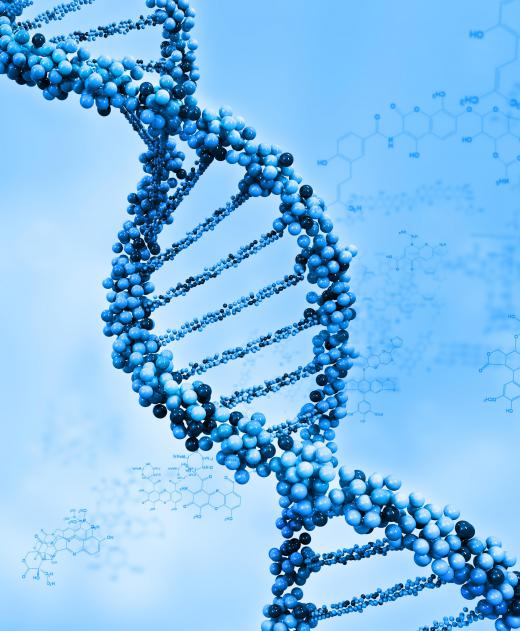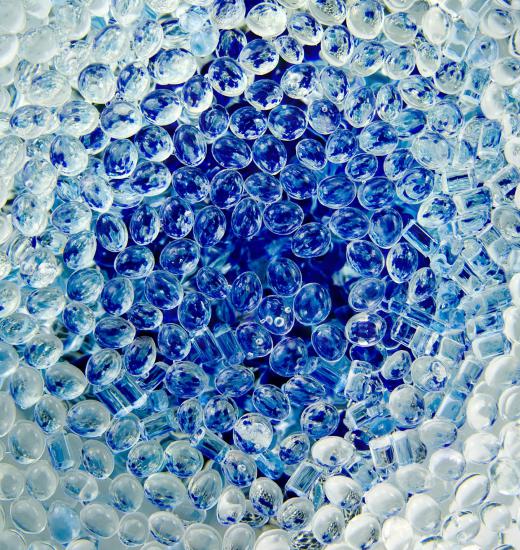What is a Macromolecule?
The term macromolecule is used ambiguously to mean a molecule comprised of any "large number" of atoms, but more and more it is understood to mean only those molecules comprised of at least 100 atoms. Macromolecules may also be referred to less specifically as polymers.
The bulk of macromolecules are found in biology and biochemistry, in the form of long protein chains and nucleic acids such as DNA. This class of molecules are sometimes referred to as biomacromolecules or biopolymers.
It is rare to see a metal or crystal referred to as a macromolecule, even in cases where more than a hundred atoms are found linked together. More commonly the term is applied to plastics, where there are myriad examples of the type.

Macromolecules are not simply an arbitrary distinction, as they do exhibit many physical properties that distinguish them from common molecules. One particularly interesting property is their inability to dissolve into solution without an outside assistance (in the form of ions or salts, for example). Another is their tendency to break easily, often leading to erroneous assumptions such as a claim in the 1950s that DNA could never be longer than 5,000 base pairs. Though we now know this to be terribly incorrect (DNA strands can be in the tens of millions of base pairs), at the time scientists were breaking the DNA chains every time they would bring them under a microscope.

The constituent parts of a macromolecule are known as monomers. Virtually all macromolecules are created from a very small set of only about fifty monomers. By being linked in different configurations, however, this small set yields an extremely large variety of macromolecules.
Many of the differences between organisms can be traced to the different configurations of macromolecules within the organism. Within a single organism, there may even be great differences between the assorted macromolecules.

In usage, "macromolecule" may also refer to aggregates of multiple macromolecules, producing in essence super-macromolecules. These macromolecules are held together not by chemical bonding, but rather by intermolecular forces. Properly, one would refer to these combinations as macromolecule complexes, and to the constituent components as subunits.
AS FEATURED ON:
AS FEATURED ON:













Discussion Comments
Thanks! This website is awfully helpful! it would really help though if you found some way to put in elements found in macromolecules. please? and thank you.
i loved this article! this is the best website i ever used. thanks so much for making this easy to read!
i just love this website! it was easy to read, and i had no problems.
this is the best website i ever used! it helped a *lot* with my science fair research paper. I got a good grade on it and had an easy time reading it.
I have a question about macromolecules. How do macromolecules form? Thank you.
i think that this site was awesome. it helped me a lot for my research paper i had to do for my science fair. thanks for making it easy to read and for being such a help!!
Post your comments